World 🢖 Asia 🢖 Indonesia 🢖 East Java
Volcanoes 🢔 Geological wonders 🢔 Categories of wonders
Wonder
Kawah Ijen
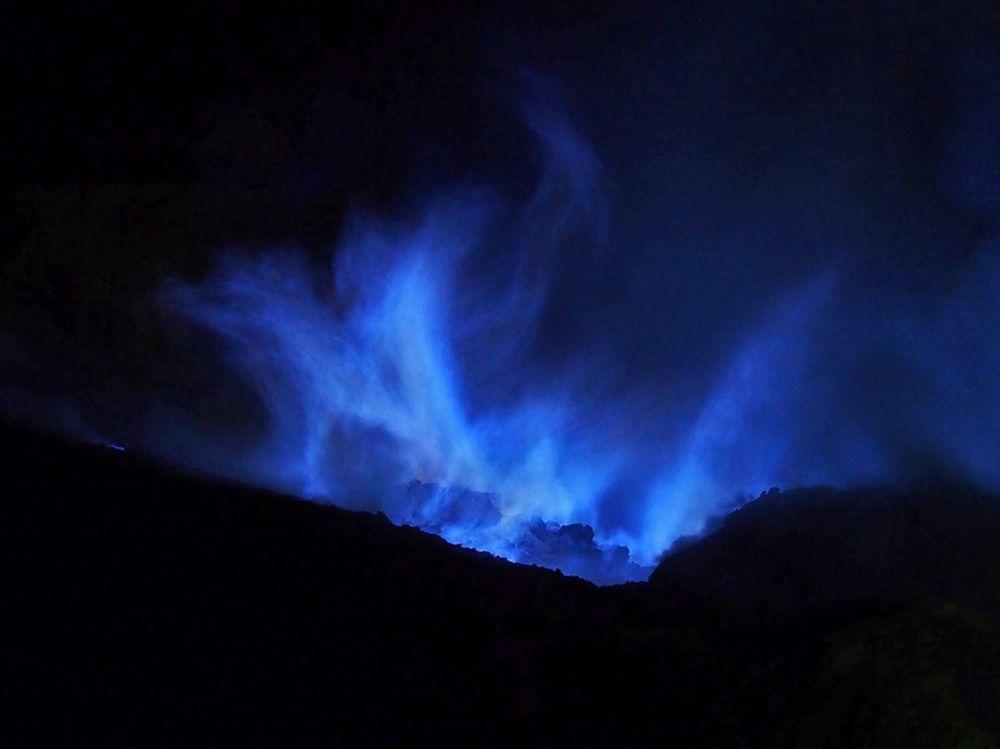
 In short
In short
One of the most unusual volcanoes on the world is Kawah Ijen. It contains the largest lake of acid in the world but especially impressive are the eerie blue flames around the solfataras in the crater – an unforgettable sight in the night.
 53.8%
53.8%
GPS coordinates
Height
Alternate names
Map of the site
If you see this after your page is loaded completely, leafletJS files are missing.
 In detail
In detail
Ijen
There is Ijen and Kawah Ijen. The first – Ijen (also Kendeng) – is the whole complex of volcanoes in this area, spread around the giant, approximately 20 km wide caldera. The highest volcano here is the 2,799 m tall Gunung Merapi. But the story goes about another part of Ijen: a crater that is located to the west of the mighty Gunung Merapi – Kawah Ijen (Ijen crater).
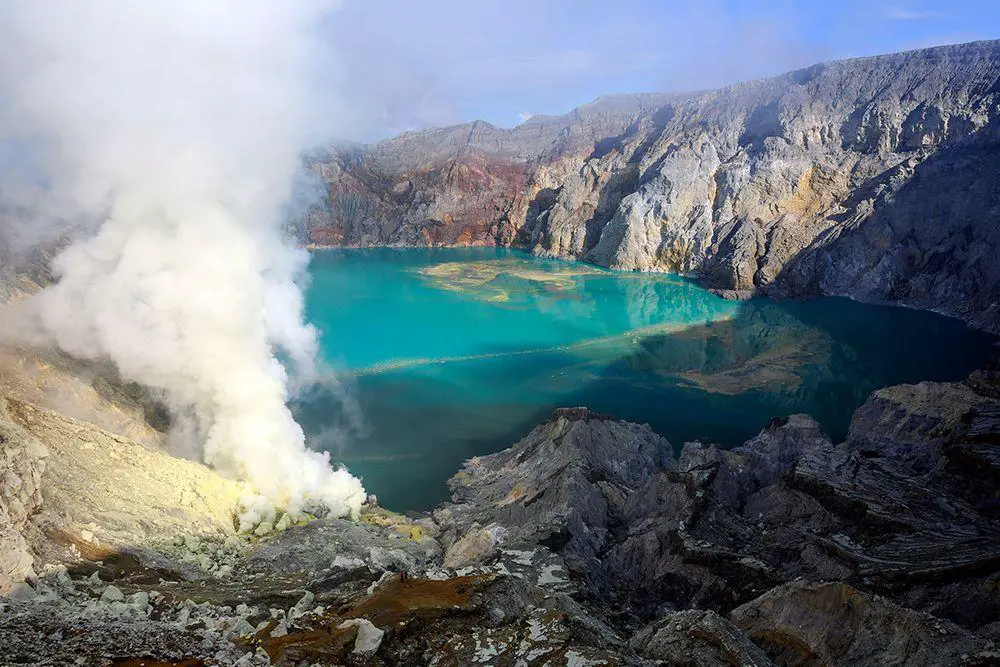
This crater has several very unusual characteristics, including an enormous lake of pure acid and… cracks that emit burning gas which in the night glow in eerie blue color. But, when the day comes, a group of men arrives to hack off large chunks of pure, yellow sulfur which constantly is emanating from the ground.
Lake of acid
When looking at the satellite image, Kawah Ijen attracts attention with a lake in unnatural, turquoise color. This crater lake is filled with almost pure sulphuric acid and is the largest highly acidic lake in the world. Lake is some 0.7 by 0.9 km large, it contains some 30 million m³ of acidic liquid (hyper acidic brine), and is some 200 m deep.
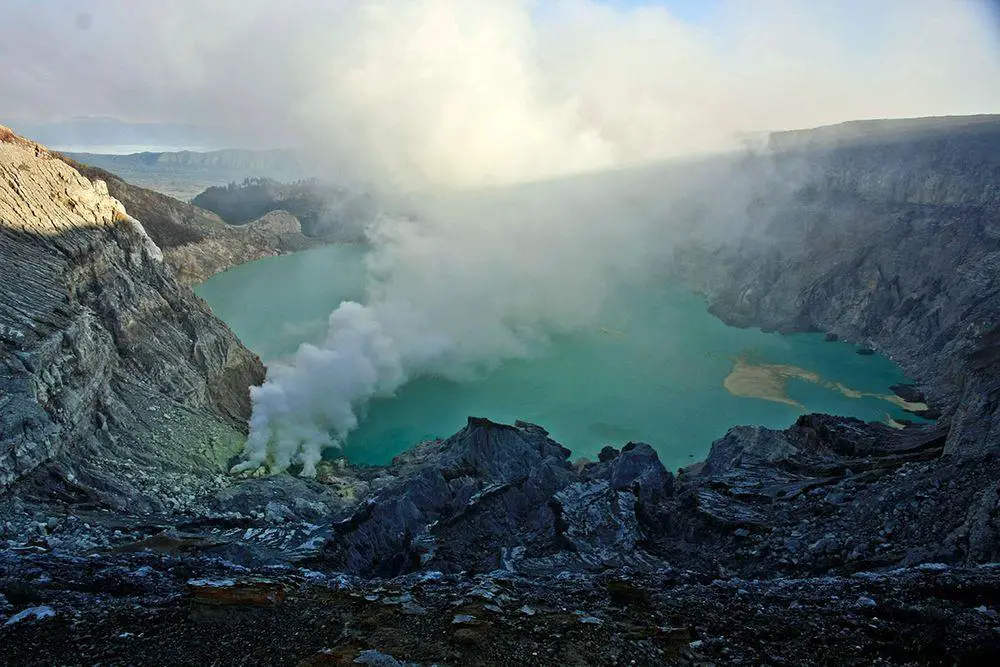
Adventurer George Kourounis in 2008 in a rubber boat measured the acidity of the lake: at the edges, the acidity was 0.5 pH, and in the middle – 0.13 pH. Thus it is a lot more acidic than the acid in car batteries.
From the lake starts a river – Banyu Pahit. Of course, this also is a very unusual river with highly acidic water. In this water have been dissolved metals – thus it is a natural source of chemical pollution.
In the case of a powerful eruption the wave of acid from the lake would create a potential danger to surrounding villages.
Sulphur mining
At the south-eastern bank of the lake are located fumaroles that emit sulfurous gases. Over time here have formed rich deposits of this yellow substance.
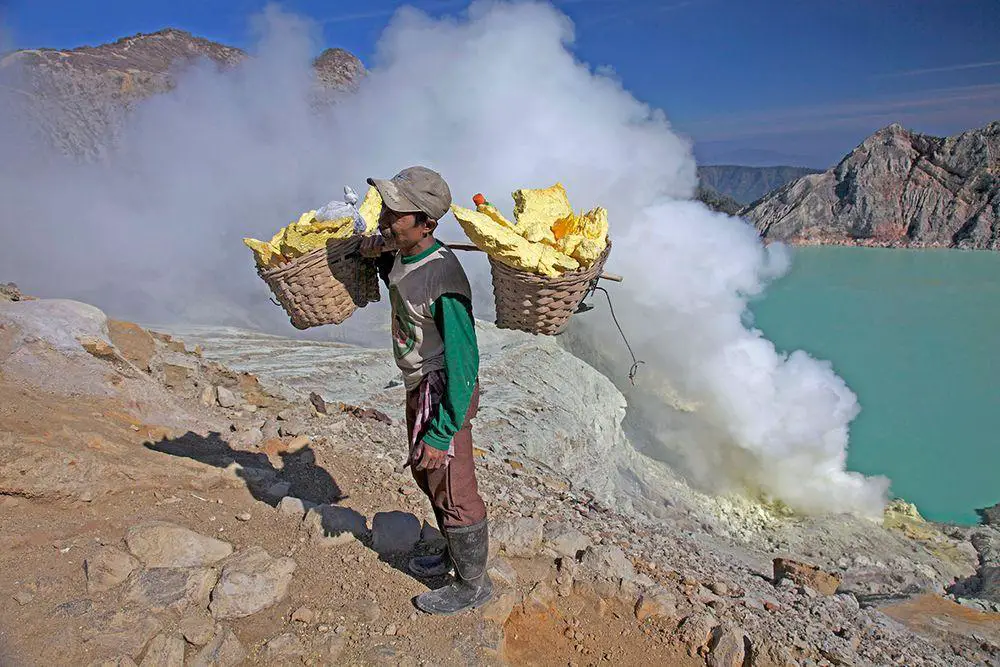
People have installed a system of ceramic pipes and molten sulfur flows through these pipes and accumulates in heaps on the ground.
Some 200 local miners are mining the sulfur – some 14 tons per day. This extremely hard work is done with hand tools. Chunks of sulfur are carried away on the back. Each miner carries some 70 – 90 kg of sulfur several times per day. The work is hazardous for the health, especially for the respiratory system and teeth – but working with gas masks is not easy either, thus workers often prefer to work without them.
Blue fire
The sulfurous gas and condensed liquid in some locations are burning. During the daytime, the flames are not that bright but at the night the sight is unforgettable – the flames have a deep blue color. For the most part, the flames are ignited by people – by torches of sulfur miners who often work also during the nighttime.
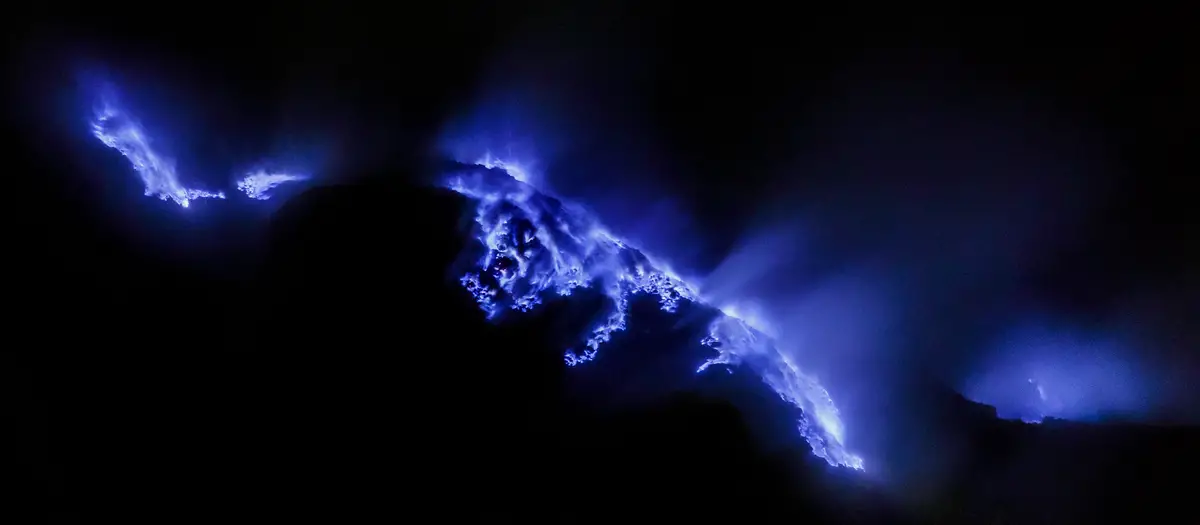
These flames are up to 5 m high and the temperature of the flame reaches up to 600° C. Part of the gas is condensed as a liquid which continues to burn.
Some other volcanoes around the world also have such blue fires but the Blue Fire of Ijen is by far the largest in the world.
Nighttime ascent on this mountain is an increasingly popular tourist attraction and few regret the effort – the sight is truly unforgettable. Though one should be very careful here because this is a very hostile environment for any form of life. Of course, the assistance of local guides is of high value, thus also giving some input into the economy of the hospitable, hard-working local people.
References
- Global Volcanism Program, Ijen. Accessed on February 4, 2017
 Linked articles
Linked articles
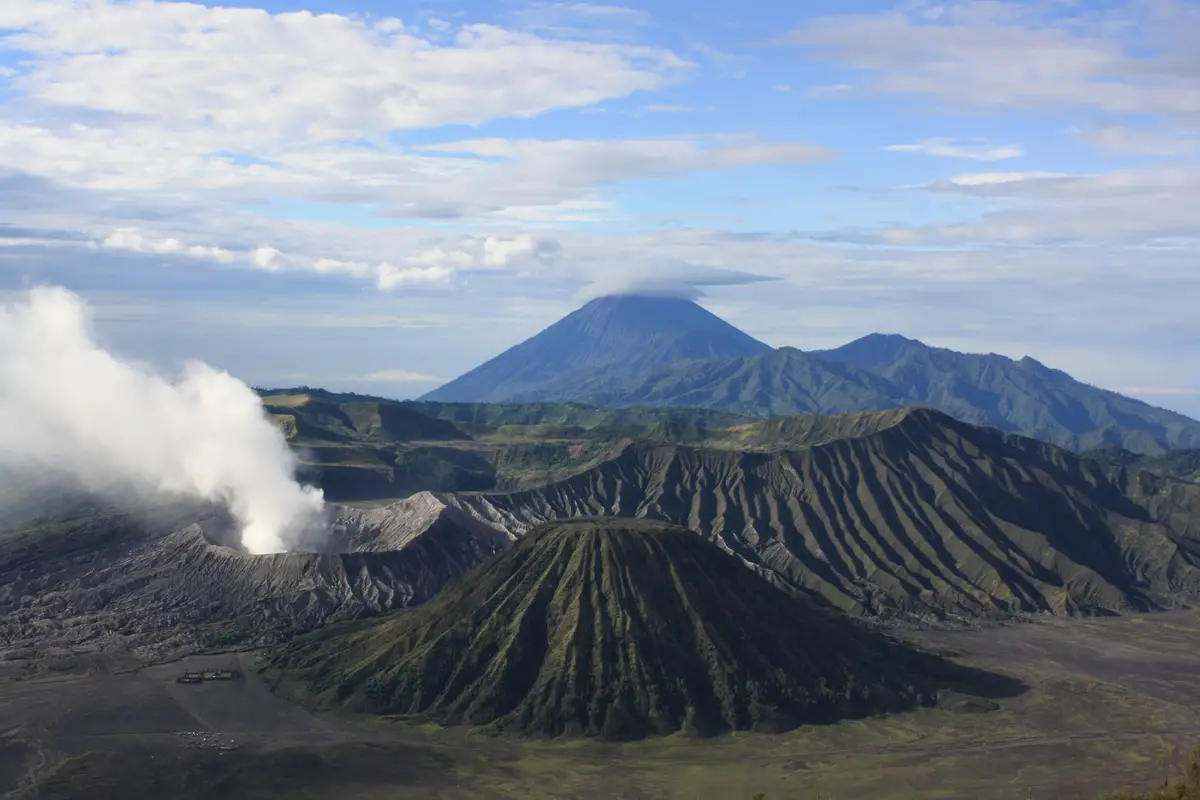
Wonders of Indonesia
Indonesia is a true land of wonders. There are few other countries in the world that can offer a similar array of diverse, unique, and beautiful natural and cultural monuments.
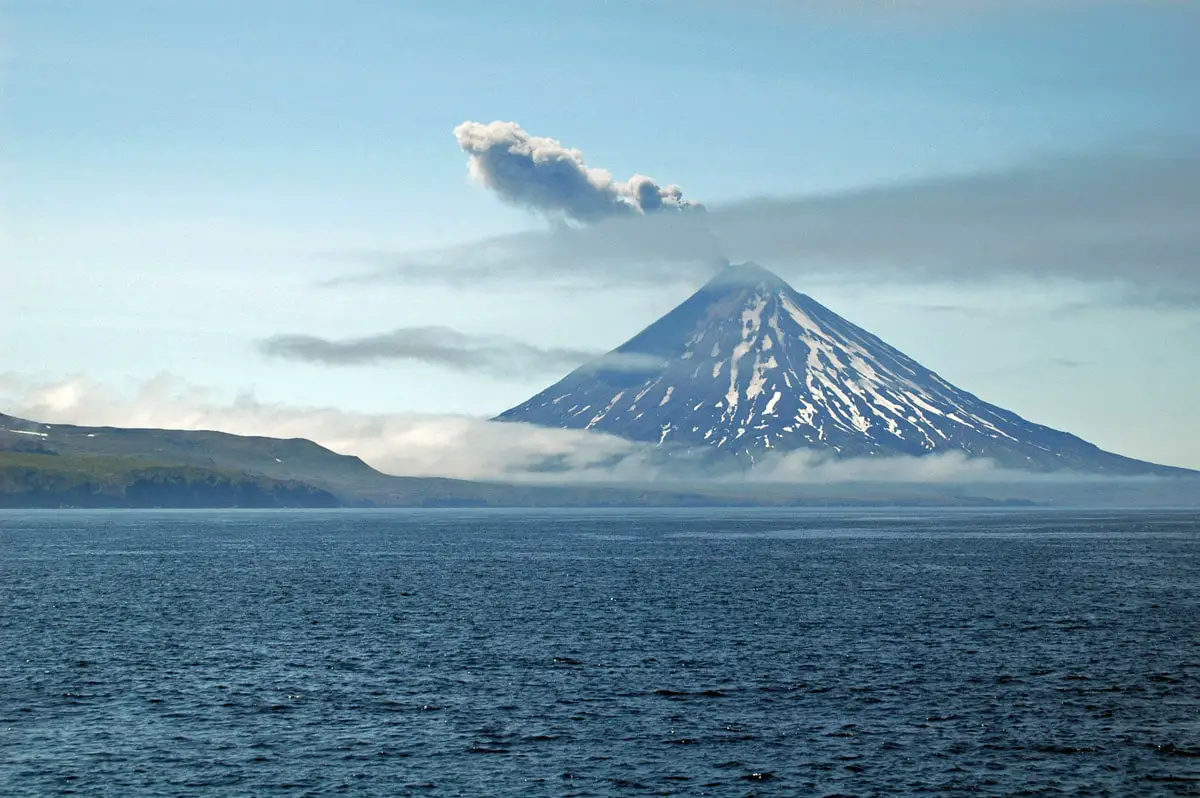
Volcanoes
This category includes the most unusual and interesting volcanoes of the world.
Over the last 10,000 years in some 1,500 places around the Earth mantle of Earth has emitted lava, ash, and gases through the crust of the planet. Each of these places is an active volcano. Some 50 – 70 volcanoes erupt every year and at any moment there are some 20 – 30 eruptions ongoing.

Lakes and streams
There are many factors that can make lakes, sea bays, or rivers unusual. Some lakes have unusual chemical properties and even do not contain water at all – such as lava lakes. Others may have unusual animals living in them or… legends about such animals.
 Recommended books
Recommended books
South East Asian Railway Journeys Jakarta to Banyuwangi
This travelogue describes the sixth of a series of long-distance journeys through South East Asia. It covers the train trip from Jakarta through the northern part of Java to Banyuwangi on the eastern coast of the island. Thereafter, the ferry crossing to Bali is described as well as the bus trip to Denpasar. The content is anecdotal and richly illustrated with photographs.
Java (Lonely Planet, 2nd edition)
Contains essential advice for exploring the bustling cities or the pastoral peace of the countryside, a special section devoted to religious architecture, comprehensive coverage of national parks and tranquil hill resorts, and a handy language chapter.


